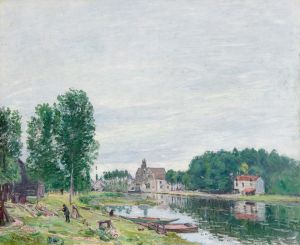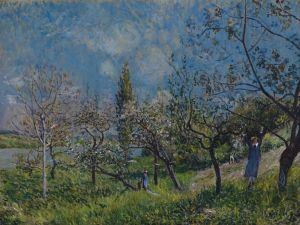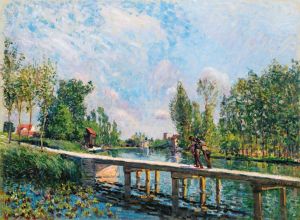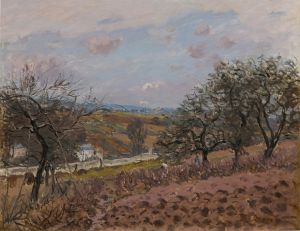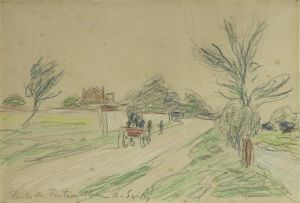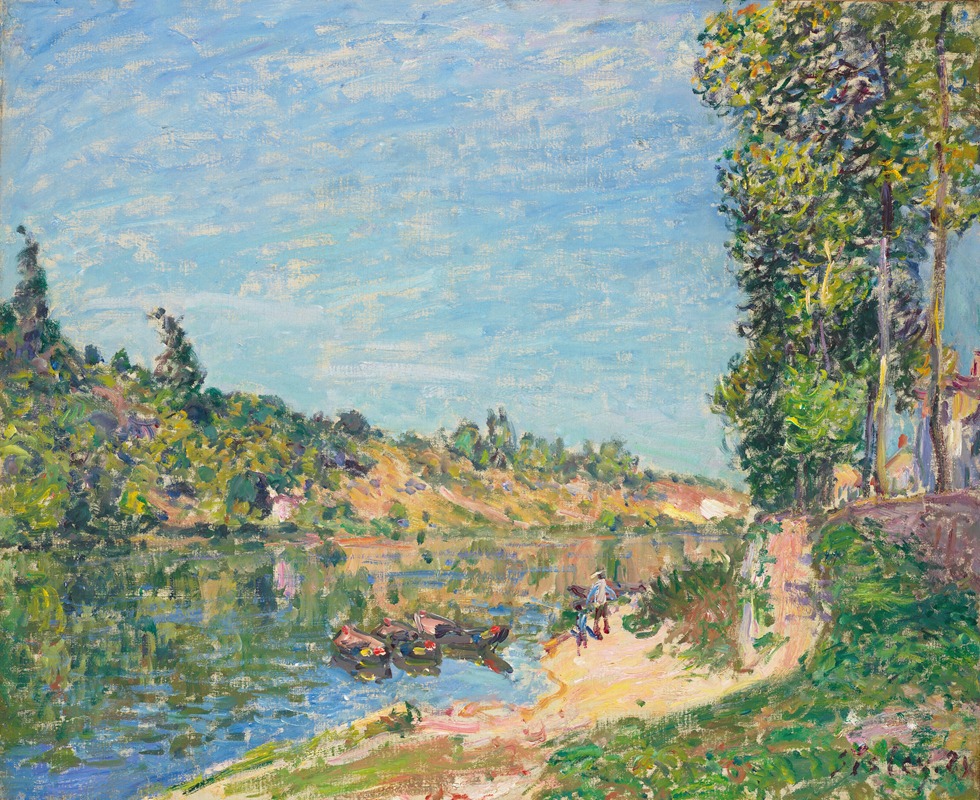
Les Coteaux de La Celle, après Saint-Mammès
A hand-painted replica of Alfred Sisley’s masterpiece Les Coteaux de La Celle, après Saint-Mammès, meticulously crafted by professional artists to capture the true essence of the original. Each piece is created with museum-quality canvas and rare mineral pigments, carefully painted by experienced artists with delicate brushstrokes and rich, layered colors to perfectly recreate the texture of the original artwork. Unlike machine-printed reproductions, this hand-painted version brings the painting to life, infused with the artist’s emotions and skill in every stroke. Whether for personal collection or home decoration, it instantly elevates the artistic atmosphere of any space.
Alfred Sisley (1839–1899) was a prominent Impressionist painter known for his landscape works, which often depicted serene and atmospheric scenes of rural France. One of his paintings, Les Coteaux de La Celle, après Saint-Mammès (translated as The Hills of La Celle, after Saint-Mammès), exemplifies his dedication to capturing the natural beauty of the French countryside with a focus on light, color, and atmosphere.
This painting was created during Sisley's mature period, a time when he was living and working in the Île-de-France region, particularly near the towns of Moret-sur-Loing and Saint-Mammès. These areas, located along the Loing River, were frequent subjects of Sisley's work. The painting depicts a tranquil rural landscape, with rolling hills and a soft interplay of light and shadow. Sisley’s characteristic brushwork and use of a light, pastel-like palette are evident, emphasizing the changing effects of light and weather on the scenery.
Sisley often painted en plein air (outdoors), a hallmark of the Impressionist movement, which sought to capture the immediacy and fleeting qualities of nature. In Les Coteaux de La Celle, après Saint-Mammès, his attention to detail and his ability to convey the atmosphere of the scene are apparent. The composition is balanced and harmonious, reflecting Sisley's deep appreciation for the natural world and his skill in portraying it with subtlety and nuance.
The exact date of the painting's creation is not definitively documented, but it is consistent with Sisley's works from the late 19th century, particularly the 1880s and 1890s, when he was most active in the region. Like many of Sisley's works, this painting was likely created as part of a series or as a standalone piece exploring the landscapes near his home.
Today, Les Coteaux de La Celle, après Saint-Mammès is recognized as an example of Sisley's mastery in landscape painting and his contribution to the Impressionist movement. The painting is held in a private collection or museum, though specific details about its current location or provenance are not widely available. Sisley's works continue to be celebrated for their poetic depiction of nature and their role in shaping the Impressionist aesthetic.










